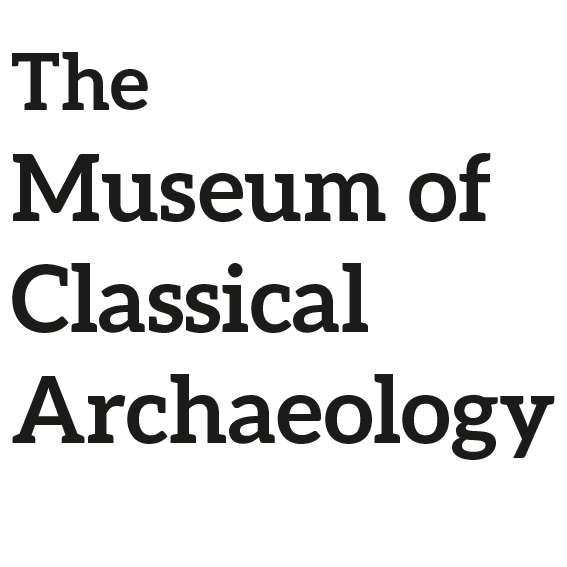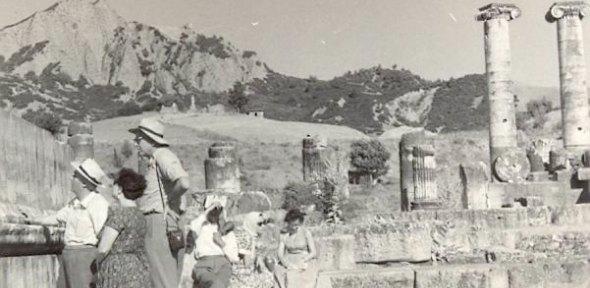
Some Memories of my Travels with George
By Jane Bean, George's wife
Written in 2014
In 1959 Professor John Cook came out to join George in an exploration of the Troad, which, until that time, had been a military areas for many years. This was an exciting project since all foreigners had been excluded since WW2.
We visited many little known sites, but naturally made our way down to Troy, staying at a small village near the site. Anyone with experience of travel in Turkey will know the wonderful hospitality given to any strangers arriving in the village, almost always without warning.
We would be taken to the coffee house and entertained by the male population while the women scurried round to prepare a room for us and to cook a meal. For a long time we sat while basic questions were asked and answered and George’s letters of introduction from Istanbul University were handed to the Headman, who not surprisingly was unable to read them.
Eventually a room in the Headman’s house was prepared for us and the meal ready, so we were escorted there and given a very good meal which included a goat stew, with many side dishes of vegetables and rice and the village bread.
This resembled a thin pancake, not unlike brown paper, which was not unpalatable and was useful for scooping up mouthfuls from the dishes placed on the floor. No women appeared and we were waited on by young men who brought water and towels for us to wash our hands.
Unfortunately, the goat stew smelt very suspicious and John couldn’t face it, and nor could I. George feeling duty bound to acknowledge our host’s generosity, therefore helped himself liberally.
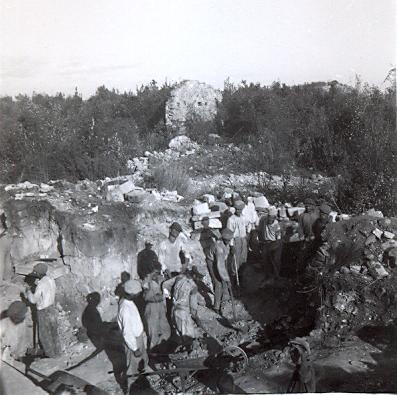
Dig in process, Side 1946-56 (D2.37)
We retired to our bedroom where three mattresses were prepared for us with the embroidered sheets and pillow cases made by all young Turkish girls and brought to their new home as part of their dowry, exclusively kept for guests.
I was vaguely aware of George going out into the garden, but went back to sleep, until John woke me to say that George had not returned, and had I better go and see if he was all right as it was a cold night. A warm looking sheepskin coat hung on the doors so I borrowed this and found George out by the woodpile, in no state to return to bed. The coat had been a good idea as it helped him not to get a chill, but there was nothing else for me to do but return to bed.
In the morning, as this was such a sensitive area, a visit to the Kaymakam was necessary and the plan had been for George to go into the town to visit the authorities and show his credentials. As he could do nothing but lie on his mattress, John had to go off instead escorted by the Headman.
They kindly arranged for me to be taken to Troy by a guide – a small boy of about 8 years old. Having almost no Turkish at that stage, I spent a memorable day, mainly silent, but enjoying my small companion’s charm and the view over the plains of Troy.
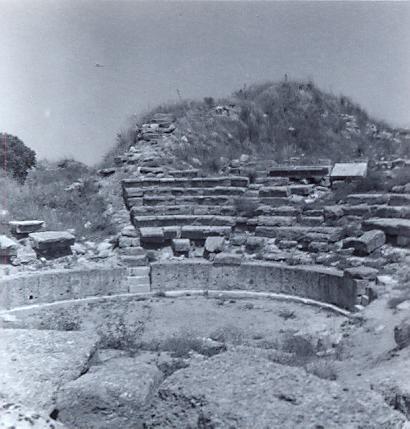
Theatre, Troy 1955-65 (C.34.3)
Fortunately George was restored by the next day and we were able to continue our journey. Village hospitality lasts for 3 nights but after that one is expected to move on, quite rightly since they are very poor and are not expected to feed travellers for any longer. We returned to Troy on the way home so I was able to have a proper tour of the site!
In general the local people are always delighted to be of help and would accompany us to find "written stones" or, in one place further south, "a cinema place". It was a mini theatre carved into the hillside (exedra?).
I remember being astonished at their willingness to please. One householder was said to have writing on the underside of the front doorstep. No hesitation – the stone was unceremoniously turned over for our inspection!
One woman was cleverly using an inscription as a scrubbing board for her washing and over the years the writing down the middle had become considerably worn. This would require some patience and skill to restore the damaged content of the lines, an exercise George very much enjoyed!
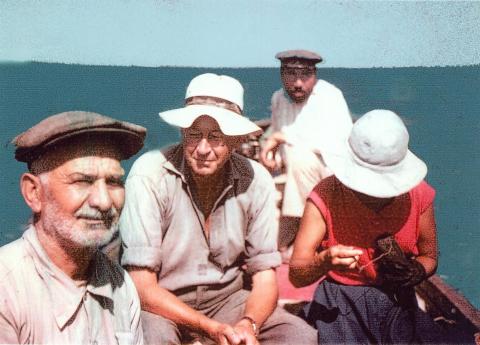
George (centre) and Jane in a boat, 1956 (copyright: Jane Bean)
It was hard for the local inhabitants to understand the reason for all this interest by important foreigners – there must surely be something to make it worthwhile – treasure perhaps? "Tell us where to dig and we’ll do all the work," was a suggestion often proffered.
Sadly on one occasion, when we returned to a site previously visited, a stone that George had shown interest in was nowhere to be found. Someone had blown it up in case there was gold inside. George did his best to dispel the idea that any treasure could be hidden inside a block of stone, but he never felt they were really convinced.
Before leaving the Troad, we stayed on the south coast where we made our way to a site by boat. John took this photograph just after we’d had great drama when George’s hat blew off into the sea and had to be deftly fished up with a boathook, after several unsuccessful attempts! (I seem to darning G’s socks!)
Here we experienced another stew for out evening meal, dark brown in colour and smelling rich and strange. It turned out to be lobster, caught that day and absolutely delicious!
Words by Jane Bean, 2014

